Editor’s note: Amazon’s October Prime Day event, aka Prime Big Deal Days, is set for October 8th and 9th. Fortunately, if you’re looking to get a leg up on your shopping ahead of the two-day deal blitz, we’ve already put together a guide to the best early Prime Day deals you can get.
Technology
The best noise-canceling headphones for 2024
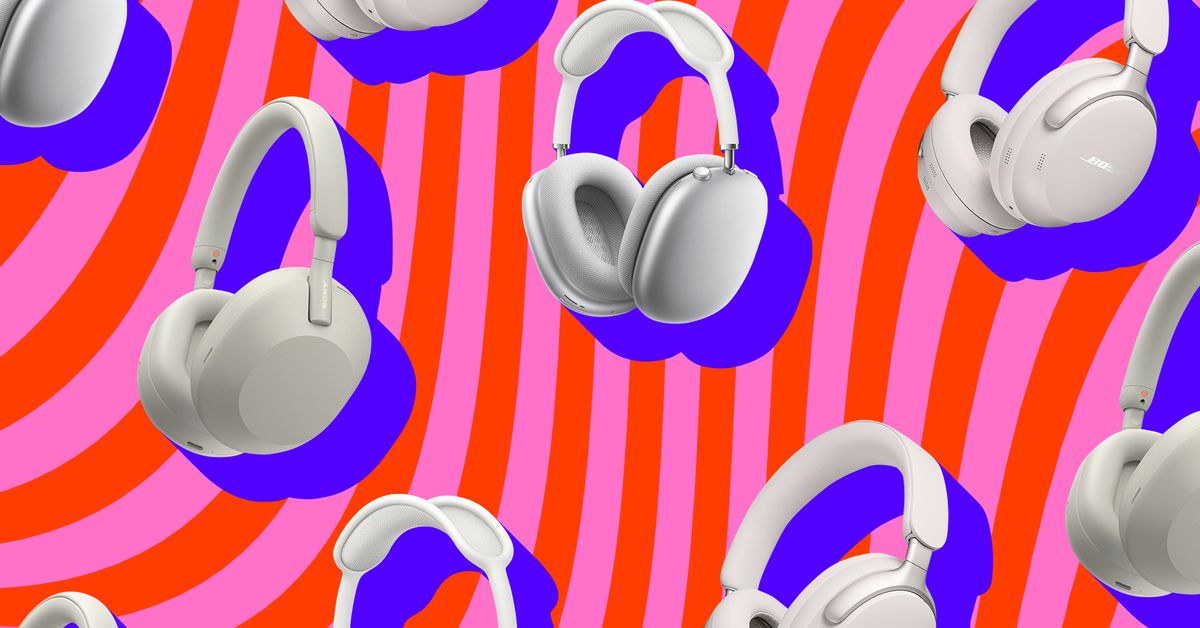
Whether you’re wearing them for the morning commute, while traveling, or if you’re simply trying to find some peace and quiet while working at home, noise-canceling headphones are a more essential piece of kit nowadays than ever before. And you’ve got a slew of great options to pick from; it’s hard to make a bad choice.
There are longtime heavyweights like Bose and Sony to pick from. Apple has quickly carved into the market with the luxurious AirPods Max. And if you’ve got an ear that demands the best audio quality, headphones from Bowers & Wilkins and Sennheiser might appeal to you more than the mainstream contenders.
Not everyone loves the feel of earbuds, and there are scenarios where over-ear and on-ear headphones are just simpler or make more sense than wireless buds — particularly if lengthy battery life matters to you.
No matter how you’re using them, the criteria for picking the best noise-canceling headphones haven’t changed.
The “best” headphones for you will differ based on which of those factors you prioritize and care about most, but our overall pick for the best noise-canceling headphones remains Sony’s WH-1000XM5. They offer a combination of sound quality, comfort, and great noise cancellation that’s hard to beat.
The best wireless headphones for most people
Battery life: 30 hours / Multipoint: Yes / Audio codecs: LDAC, AAC, SBC Connectors: USB-C (charging), 3.5mm headphone jack (audio)
Sony’s WH-1000XM5 have a completely different design from their predecessors. The changes result in greater comfort when you’re wearing them on your head for extended periods of time — like on a flight or if you’re at the office.
Noise cancellation has been further improved from the already-stellar performance of the M4, putting Sony at the front of the pack compared to all major competitors. Sound quality is more detailed and balanced than the older 1000XM4; the low end is still punchy but tighter and less boomy than before. The M5 offer the best voice call performance in the 1000X series to date, and they can connect to two devices simultaneously, so you can stay clued in to what’s happening on your phone when you’re working away on your laptop or tablet.
Sony’s headphones also include unique features like “speak to chat,” which automatically pauses your music and pipes in ambient audio whenever you start talking. Or you can hold one hand over the right ear cup to activate quick attention mode, which is convenient when grabbing a coffee or listening to airport announcements. And like other high-end headphones, the 1000XM5 can detect when they’ve been removed from your ears for auto-pause.
The main downside of the WH-1000XM5 is that at $399.99, they’re more expensive than prior models. That’s a big reason to consider the 1000XM4, which were our previous top pick for noise-canceling headphones. They remain part of Sony’s lineup and can often be found on sale.
The best noise-canceling headphones for travel
Battery life: 24 hours / Multipoint: Yes / Audio codecs: aptX Adaptive, AAC, SBC Connectors: USB-C (charging), 2.5mm headphone jack (audio)
Bose’s QuietComfort Ultra Headphones are basically a blend of the company’s prior Noise Canceling Headphones 700 and QuietComfort 45 that borrow the best traits from both — while throwing in a new “immersive audio” listening mode. Like past Bose cans, they’re very light and comfortable on your head, even when worn for long stretches of time. Best of all, unlike the Noise Canceling Headphones 700, these can be folded to make them easier to travel with.
Their 24-hour battery life is more than adequate, and Bose has added support for the aptX Adaptive Bluetooth codec for improved audio fidelity on Android devices.
Photo by Chris Welch / The Verge
The immersive audio feature works well on some songs, but less so on others. It’s worth experimenting with, but even if you leave it off entirely, you’re left with best-in-class noise cancelation, pleasing sound, and a helpful “aware” transparency mode.
The best wireless headphones for iPhone owners
Battery life: 20 hours / Multipoint: No / Audio codecs: AAC, SBC Connectors: Lightning (audio and charging)
There was definitely some sticker shock when Apple introduced a $549 set of noise-canceling headphones in 2020. The AirPods Max cost significantly more money than any of our other recommendations. But Apple’s build quality is on another level: these trade the plastic you’ll find in many noise-canceling headphones for steel and aluminum, and the ear cups are a breathable mesh fabric. They’re hefty headphones, there’s no denying that. But aside from Apple refusing to include a headphone cable in the box, there’s nothing about the AirPods Max that feels cheap. And I appreciate the simplicity of using the digital crown for controls instead of relying on hit-or-miss gestures like taps and swipes.
The most important part is that the AirPods Max deliver audio quality that’s up there with the best high-end Bluetooth headphones. They have an immersive, wide soundstage and fantastic dynamics, and you’ll find yourself hopping around your music library just to hear what they bring out in your favorite songs.
Apple’s noise cancellation is on par with Sony and Bose, and no one does transparency mode better; at times, it can make you think you’re not wearing headphones at all. Extra features like Spatial Audio (surround sound for movies and TV shows) and automatic switching between Apple gadgets help make it a bit easier to swallow their daunting price.
But the AirPods Max do have faults. The carrying case is abysmal, battery life is only average for the category, and just like regular AirPods, they’re designed with Apple’s ecosystem in mind. It gets much harder to justify dropping $550 on them if you live outside the iPhone and Mac universe.
Also, it’s worth noting that Apple recently introduced a new pair of the AirPods Max with USB-C charging and five new color options. We haven’t had an opportunity to test them yet, but given just how little they differ from Apple’s existing headphones, we don’t anticipate performance being any different. The question is whether you’re willing to pay the full retail price of $549 to rid your life of Lightning when the original Max can often be found on sale for less than $400, especially during events like Amazon Prime Day.
The best-sounding wireless headphones
Battery life: 30 hours / Multipoint: Yes / Audio codecs: aptX Adaptive, aptX HD, aptX, AAC, SBC / Connectors: USB-C (audio and charging)
If sound quality is priority number one, then Bowers & Wilkins has you covered with the PX7 S2e headphones. They exhibit superb, detailed sound quality that some people prefer to the AirPods Max. The Bowers & Wilkins cans are true to the company’s legacy and style, with a fine-crafted design that exudes quality. And the newer “e” variant has a revamped digital signal processing that can bring out the best audio quality from streaming music.
I prefer their physical buttons over the tap/swipe ear cup gestures of Sony’s 1000XM5. With 30 hours of battery life, they’re more than competitive with mainstream, less expensive picks. And the sound profile is delightfully warm and will bring out the most from your favorite music. The main downside of the PX7 S2e is that there’s no traditional 3.5mm or 2.5mm output for a headphone cable. You can still listen wired over USB-C, however.
The noise-canceling headphones with the best battery life
Battery life: 60 hours / Multipoint: Yes / Audio codecs: aptX Adaptive, aptX, AAC, SBC / Connectors: USB-C (audio and charging), 2.5mm headphone jack (audio)
Sixty hours. They can last for up to 60 hours on a single charge. That’s really all you need to know about the Sennheiser Momentum 4 headphones if you’re looking for an endurance champ. But they also sound terrific and prove extremely comfortable over long listening periods. This combination doesn’t come cheap, but you can find some good occasional deals on them.
Sennheiser’s Momentum 4 Wireless headphones edge out Bowers & Wilkins on comfort thanks to their lighter design, and the noise cancellation is slightly better. Next to the Sonys and Bose’s QC Ultra Headphones, it doesn’t get much cozier. These are headphones you can wear for multiple hours without any fatigue or pressure on your ears.
Sennheiser’s sound signature is a bit more expressive and puts more emphasis on bass than B&W, but that upper treble range still comes through crystal clear. My only real nitpick with the Sennheisers is that they tend to occasionally power on inside the case for no obvious reason and automatically connect to my phone.
Both the B&W and Sennheiser headphones support multipoint connectivity and a range of Bluetooth codecs, including SBC, AAC, aptX, and aptX Adaptive.
The best noise-canceling headphones for style
Battery life: 60 hours / Multipoint: Yes / Audio codecs: aptX Adaptive, aptX HD, aptX, AAC, SBC Connectors: USB-C (charging), 3.5mm headphone jack (audio)
Marshall’s wireless headphones have proven surprisingly popular, and the company’s most expensive pair is also its best yet. The Monitor II ANC headphones are priced at $320, which puts them on the same playing field as Bose, Sony, and other tech companies that have been making premium noise-canceling cans for many years.
Marshall falls short of those brands in sound quality and ANC, but the Monitor II still provide warm, textured sound and perform decently at cutting down on ambient noise. But they definitely stand out from the pack in looks, with a design that speaks to the company’s heritage. The headphones fold up for easy carrying, and Marshall’s signature gold joystick makes the Monitor II simple to control.
They can also last up to 30 hours with NC enabled or up to a staggering 45 hours if you’re already someplace quiet and can do without the feature. That impressive longevity beats our primary picks. A lack of AAC codec support at this price stings, but I’ve enjoyed the Monitor II every time I’ve put them on. They’re more than just an amp brand stamped onto an average pair of headphones.
Update, October 1st: Updated to reflect current pricing and mention Amazon’s forthcoming Prime Day sale. Brandon Widder also contributed to this post.
Technology
NYT Strands today — hints, answers and spangram for Wednesday, October 2 (game #213)
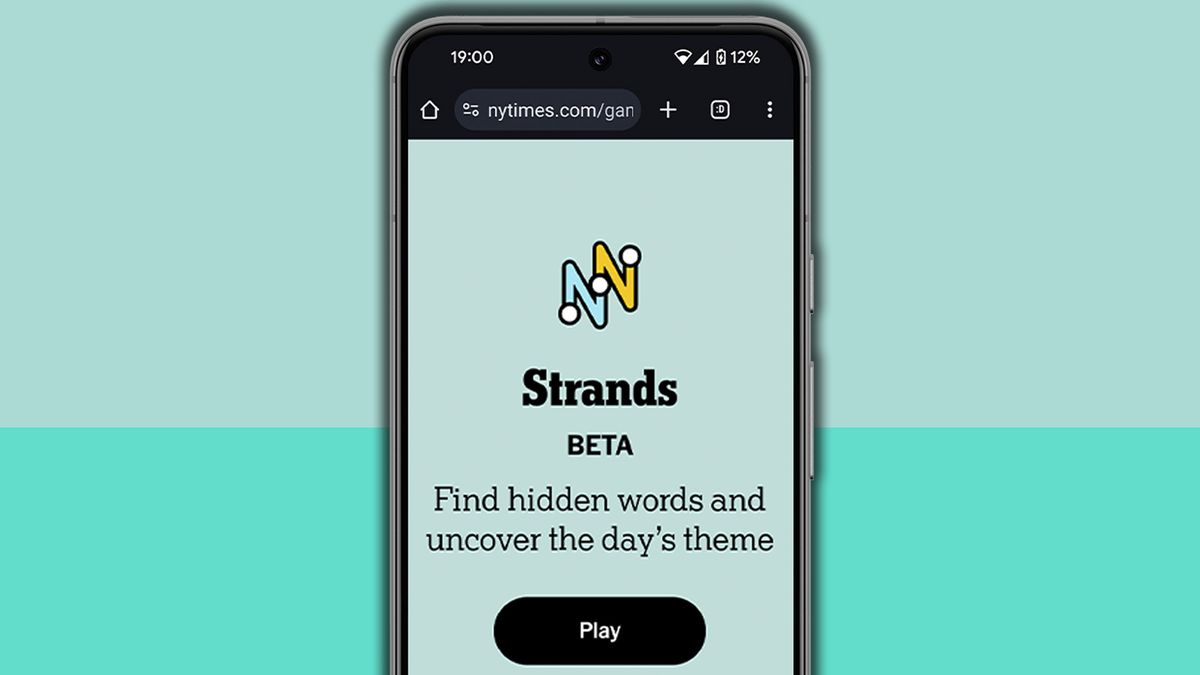
Strands is the NYT’s latest word game after the likes of Wordle, Spelling Bee and Connections – and it’s great fun. It can be difficult, though, so read on for my Strands hints.
Want more word-based fun? Then check out my Wordle today, NYT Connections today and Quordle today pages for hints and answers for those games.
SPOILER WARNING: Information about NYT Strands today is below, so don’t read on if you don’t want to know the answers.

NYT Strands today (game #213) – hint #1 – today’s theme
What is the theme of today’s NYT Strands?
• Today’s NYT Strands theme is… Fresh out of the oven
NYT Strands today (game #213) – hint #2 – clue words
Play any of these words to unlock the in-game hints system.
- TRAIT
- STONE
- SOAR
- TRUMP
- DINE
- LINE
NYT Strands today (game #213) – hint #3 – spangram
What is a hint for today’s spangram?
• Dough but not nuts
NYT Strands today (game #213) – hint #4 – spangram position
What are two sides of the board that today’s spangram touches?
First: top, 3rd column
Last: bottom, 4th column
Right, the answers are below, so DO NOT SCROLL ANY FURTHER IF YOU DON’T WANT TO SEE THEM.
NYT Strands today (game #213) – the answers

The answers to today’s Strands, game #213, are…
- SCONE
- DANISH
- CROISSANT
- MUFFIN
- STRUDEL
- GALETTE
- SPANGRAM: PASTRIES
- My rating: Moderate
- My score: Perfect
Hello, Mr/Mrs/Ms NYT, I have a question for you: in what way is a MUFFIN a PASTRY? Or a SCONE? STRUDEL, yes. CROISSANT, definitely. DANISH, sure. GALETTE… well, we’ll get to that. But not MUFFIN or SCONE, which are both quick breads or potentially cakes. Maybe I’m missing some crucial detail here – I’m not a chef – but I just don’t get why they were included.
Fortunately, it wasn’t too difficult for me to find them anyway, because I’m well aware that sometimes the NYT makes odd decisions with categorization, so I always watch out for curveballs. That didn’t help me with GALETTE, though, chiefly because I’ve never heard that word before. Still, they look lovely, so I shall be trying one next time I see one.
How did you do today? Send me an email and let me know.
Yesterday’s NYT Strands answers (Tuesday 1 October, game #212)
- PARAMOUNT
- DISCOVERY
- HISTORY
- HALLMARK
- LIFETIME
- SPANGRAM: NETWORK
What is NYT Strands?
Strands is the NYT’s new word game, following Wordle and Connections. It’s now out of beta so is a fully fledged member of the NYT’s games stable and can be played on the NYT Games site on desktop or mobile.
I’ve got a full guide to how to play NYT Strands, complete with tips for solving it, so check that out if you’re struggling to beat it each day.
Servers computers
Dell Blade Server Cost (PowerEdge M420, M520, M620, M820, M910, M915)
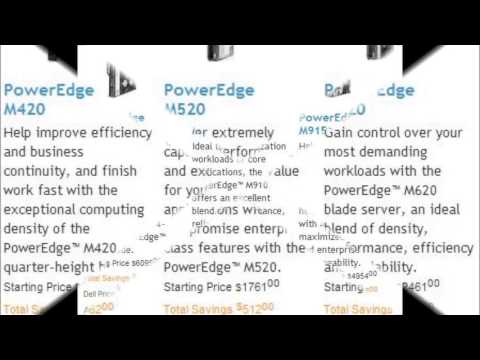
http://bit.ly/newDellCoupon
Find the latest Dell PowerEdge M420, M520, M620, M820, M910, M915 Blade server cost and discount coupon code .
source
Technology
Watch how astronauts drink coffee in space
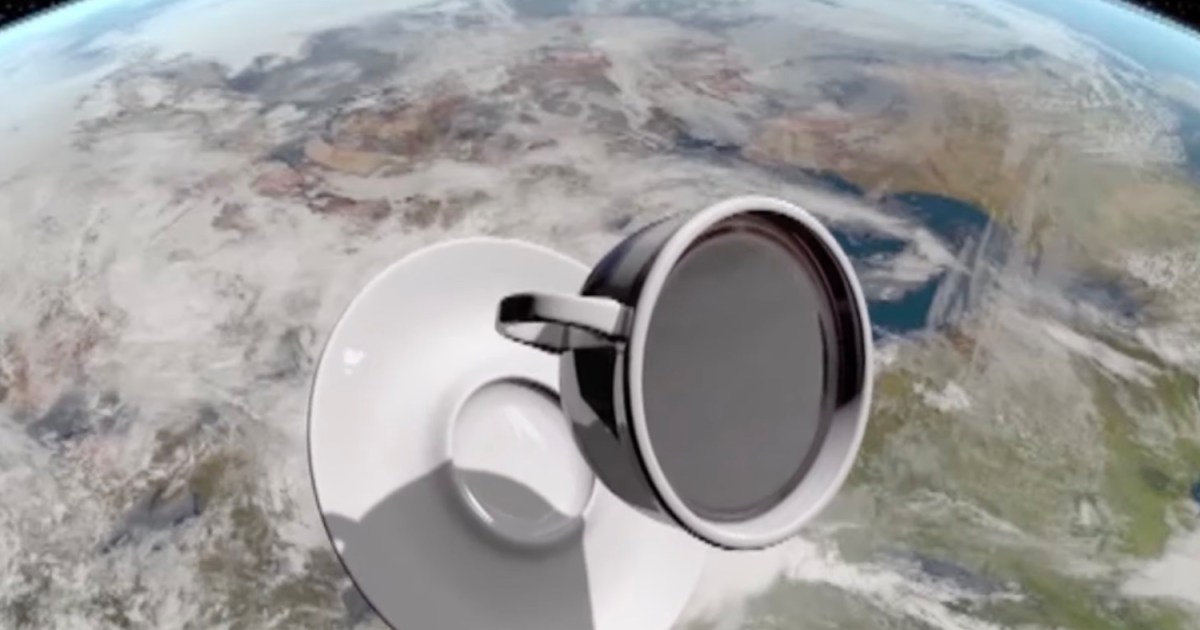

Like many folks, astronauts enjoy a cup of joe from time to time, but the lack of gravity means that preparing and drinking it is a little different to how you do it back on terra firma.
With that in mind, NASA has just released a short video (above) revealing how astronauts aboard the International Space Station (ISS) get their daily coffee fix.
To get the water for their brew, the astronauts use a specially designed water dispensing unit that takes recycled liquids and moisture drawn from the air. Once the water has been heated, the astronaut grabs a plastic pouch filled with freeze-dried coffee grounds, connects it to the unit, and fills it with the hot water. After that, they can go off to enjoy their coffee, sipping it through a straw. Or from a cup … let us explain.
Zero Gravity coffee cup
Back in 2008, one astronaut, Don Pettit (who happens to be aboard the station right now, too), decided that he wanted to enjoy his coffee in the more traditional way, by drinking it from a mug. So he invented what eventually became known as the Zero Gravity coffee cup, and you can see it in the video. To make a prototype, Pettit tore a piece of plastic from his Flight Data File mission book to create a teardrop-shaped drinking vessel. The design relies on surface tension and the laws of physics to keep the liquid from floating away in the microgravity conditions.
Further development and refinement of the design led to the Zero Gravity coffee cup becoming the first patented product invented in space.
Now that you know how astronauts drink coffee in space, you may be wondering how they go to the bathroom — apparently this is the question that astronauts get asked most. Well, this video explains all.
For more insight into how astronauts live and work aboard the space station, take a look at this collection of videos made over the years by visitors to the orbital outpost.
Technology
AT&T claims T-Mobile Priority is ‘false and confusing marketing’
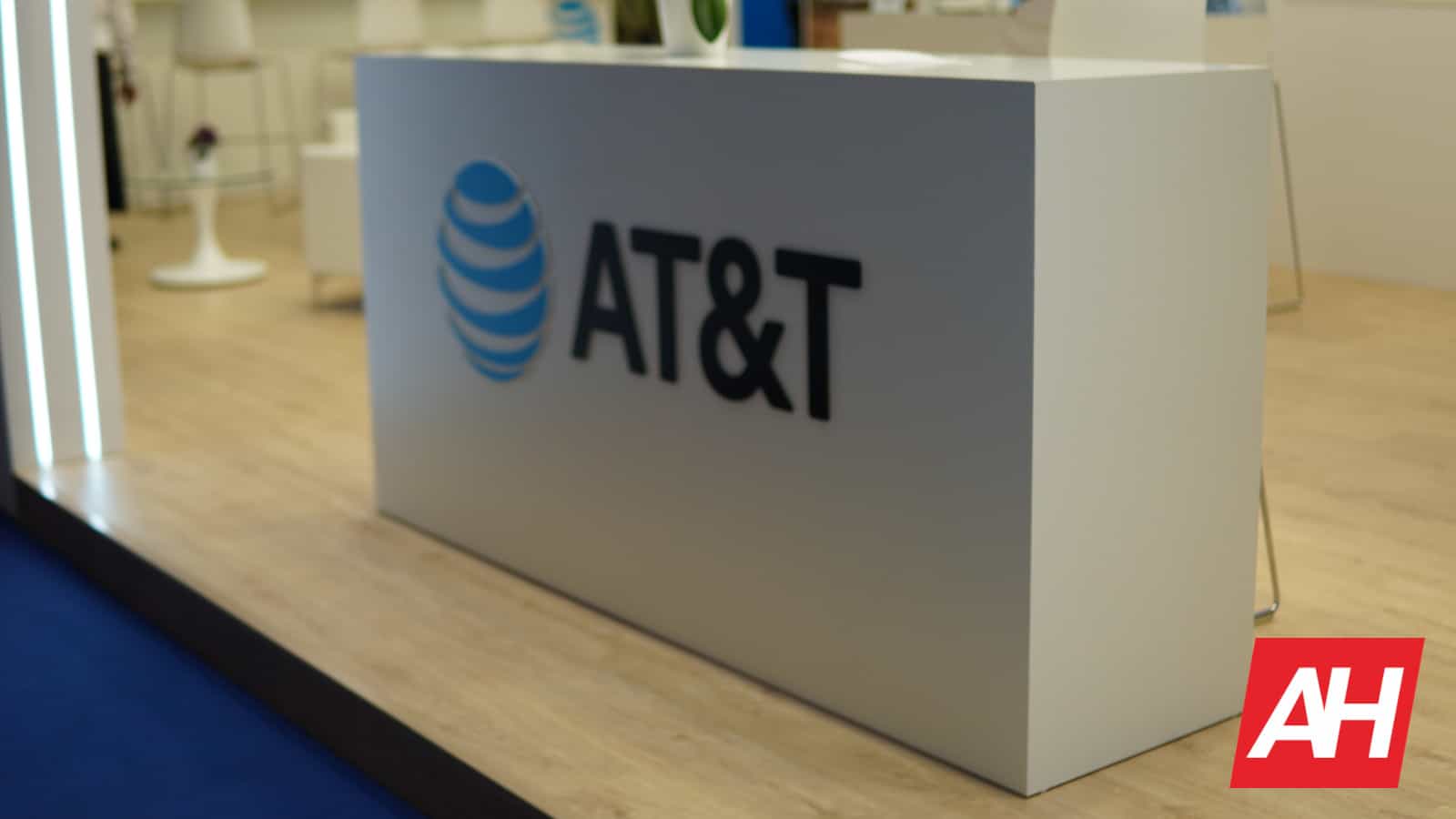
AT&T has called out T-Mobile for its marketing campaign that promotes “T-Mobile Priority”. A direct competitor to AT&T’s FirstNet, T-Mobile Priority will cater to the public safety community.
AT&T claims T-Mobile Priority marketing campaign is misleading or confusing
Telecommunications and data networks for first responders and emergency workers operate on a different level. They are not clubbed with commercial cellular communication.
To offer immediate and quick access to the internet and communications during a crisis, AT&T offers its FirstNet network. Similarly, Verizon has its Frontline service.
T-Mobile recently announced T-Mobile Priority or T-Priority, which could be considered a competitor to AT&T’s FirstNet and Verizon’s Frontline. However, there’s a big difference in the technologies employed to offer internet and communications during a crisis.
The Mobile Report has access to an internal AT&T document, wherein the telecom company has criticized T-Mobile. AT&T has written to its employees claiming T-Mobile “falsely claims it is the world’s first network slice for First Responders”.
The document stresses how FirstNet is different and better than T-Priority. The internal memo even implies T-Mobile is testing unproven technology on the “wrong people”. The company has called T-Mobile “irresponsible” for doing so.
How is AT&T’s FirstNet different from T-Mobile Priority?
In the internal document, AT&T has stressed its FirstNet service offers “a dedicated communications platform for public safety”. The company has called T-Mobile Priority a “commercial offering”.
Technically speaking, AT&T’s FirstNet operates on a dedicated cellular frequency (band 14). Similarly, Verizon Frontline uses band 13. Needless to say, these frequency bands are reserved for first responders.
T-Mobile Priority will reportedly operate on T-Mobile’s existing 5G bands. However, the company plans to segment the traffic ensuring emergency workers have a reliable communication pathway.
Moreover, T-Mobile has indicated it will deploy 24/7 Emergency Management trucks. These vehicles could act as mobile communication towers to help fix problems affecting the network. They will also offer support during disasters, public safety incidents, and more.
Although T-Mobile’s solution could work, AT&T has slammed the company for testing its technology on a sector that has critical communications needs. AT&T has suggested T-Mobile should have first tested its network slicing on commercial customers or subscribers.
Incidentally, AT&T has admitted it plans to deploy 5G network slicing. However, the company pointed out it will use them for specific mission needs only.
Servers computers
What's the difference between a server and a cloud hosting?

Want to learn more? Check out our free course on tech management for startups: link: https://myctofriend.co/htbasaccess
If you have a specific question for your project, just go ahead and ask on: https://myctofriend.co/ask
Get all the links mentioned and the print-ready notes here: https://myctofriend.co/videos/
Sacha and his cofounder already developed the first version of their product. They are now undertaking the Version 2 of their development and are considering moving to Amazon Web Services (AWS) as their cloud hosting solution.
Moving an application to the cloud is usually a very good option because you are not renting a server anymore but buying a delivered service instead.
Let’s see how cloud services work.
If you want to know more about us and our program, visit: https://myctofriend.co
—————————-
If you want to swing into action and build a startup without a CTO, then check out our FREE course: “How to build a Startup without a CTO” : https://myctofriend.co/htbasaccess .
source
Technology
Google allegedly got the Juno YouTube app removed from the Vision Pro App Store
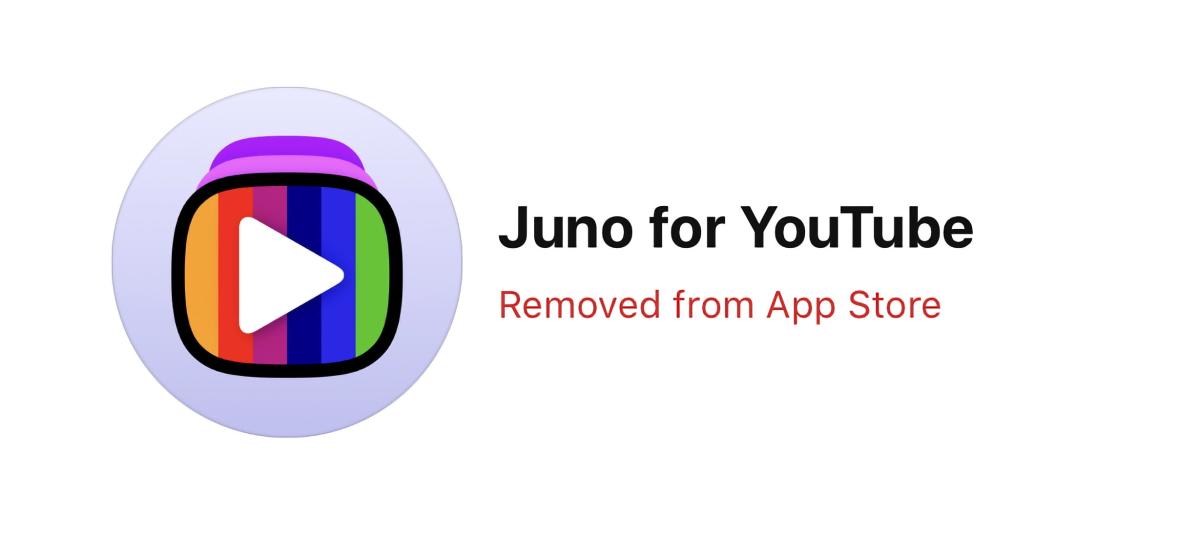
Juno, a widely praised (unofficial) YouTube app for Vision Pro, has been removed from Apple’s App Store after complaints from Google, according to from Juno’s developer Christian Selig. Google, Selig says, suggested that his app violates their trademark.
It’s the latest setback for Selig, who shut down his popular Apollo last year after the company changed its developer policies to charge for use of its API. The shutdown of Apollo and other apps like it ignited a from Reddit users and moderators.
This time, Selig says he doesn’t want drama, noting the $5 app was a “hobby project” for him to tinker with developing for visionOS. “I really enjoyed building Juno, but it was always something I saw as fundamentally a little app I built for fun,” Selig wrote on his website. “Because of that, I have zero desire to spin this into a massive fight akin to what happened with Reddit years ago.”
It’s unclear what aspect of Juno may have been the issue. Selig says that Google referenced its “trademarks and iconography” in a message to Apple, “stating that Juno does not adhere to YouTube guidelines and modifies the website” in a way that’s not permitted. “I don’t personally agree with this, as Juno is just a web view, and acts as little more than a browser extension that modifies CSS to make the website and video player look more ‘visionOS’ like,” Selig explains. “No logos are placed other than those already on the website, and the ‘for YouTube’ suffix is permitted in their branding guidelines.”
Google hasn’t made its own YouTube app for Vision Pro, though the company said such an app was “on our roadmap.” The company didn’t immediately respond to a request for comment.
Selig says that people who have already paid for the app should be able to keep using it for the time being, though there’s a chance a future YouTube update could end up bricking it.
-

 Womens Workouts1 week ago
Womens Workouts1 week ago3 Day Full Body Women’s Dumbbell Only Workout
-

 Technology2 weeks ago
Technology2 weeks agoWould-be reality TV contestants ‘not looking real’
-

 Science & Environment2 weeks ago
Science & Environment2 weeks agoHyperelastic gel is one of the stretchiest materials known to science
-

 Science & Environment2 weeks ago
Science & Environment2 weeks agoMaxwell’s demon charges quantum batteries inside of a quantum computer
-

 Science & Environment2 weeks ago
Science & Environment2 weeks agoHow to wrap your mind around the real multiverse
-

 Science & Environment2 weeks ago
Science & Environment2 weeks ago‘Running of the bulls’ festival crowds move like charged particles
-

 News1 week ago
News1 week agoOur millionaire neighbour blocks us from using public footpath & screams at us in street.. it’s like living in a WARZONE – WordupNews
-

 Science & Environment2 weeks ago
Science & Environment2 weeks agoHow to unsnarl a tangle of threads, according to physics
-

 Science & Environment2 weeks ago
Science & Environment2 weeks agoSunlight-trapping device can generate temperatures over 1000°C
-

 Science & Environment2 weeks ago
Science & Environment2 weeks agoITER: Is the world’s biggest fusion experiment dead after new delay to 2035?
-

 Science & Environment2 weeks ago
Science & Environment2 weeks agoLiquid crystals could improve quantum communication devices
-

 Science & Environment2 weeks ago
Science & Environment2 weeks agoPhysicists are grappling with their own reproducibility crisis
-

 Science & Environment2 weeks ago
Science & Environment2 weeks agoQuantum ‘supersolid’ matter stirred using magnets
-

 News2 weeks ago
News2 weeks agoYou’re a Hypocrite, And So Am I
-

 Science & Environment2 weeks ago
Science & Environment2 weeks agoQuantum forces used to automatically assemble tiny device
-

 Sport2 weeks ago
Sport2 weeks agoJoshua vs Dubois: Chris Eubank Jr says ‘AJ’ could beat Tyson Fury and any other heavyweight in the world
-

 Science & Environment2 weeks ago
Science & Environment2 weeks agoWhy this is a golden age for life to thrive across the universe
-

 Science & Environment2 weeks ago
Science & Environment2 weeks agoNuclear fusion experiment overcomes two key operating hurdles
-

 Science & Environment2 weeks ago
Science & Environment2 weeks agoCaroline Ellison aims to duck prison sentence for role in FTX collapse
-

 Science & Environment2 weeks ago
Science & Environment2 weeks agoTime travel sci-fi novel is a rip-roaringly good thought experiment
-

 Science & Environment2 weeks ago
Science & Environment2 weeks agoLaser helps turn an electron into a coil of mass and charge
-

 Science & Environment2 weeks ago
Science & Environment2 weeks agoNerve fibres in the brain could generate quantum entanglement
-

 CryptoCurrency2 weeks ago
CryptoCurrency2 weeks agoCardano founder to meet Argentina president Javier Milei
-

 News2 weeks ago
News2 weeks agoIsrael strikes Lebanese targets as Hizbollah chief warns of ‘red lines’ crossed
-

 Science & Environment1 week ago
Science & Environment1 week agoMeet the world's first female male model | 7.30
-

 Womens Workouts2 weeks ago
Womens Workouts2 weeks agoBest Exercises if You Want to Build a Great Physique
-

 News2 weeks ago
News2 weeks ago▶️ Media Bias: How They Spin Attack on Hezbollah and Ignore the Reality
-

 CryptoCurrency2 weeks ago
CryptoCurrency2 weeks agoBitcoin miners steamrolled after electricity thefts, exchange ‘closure’ scam: Asia Express
-

 CryptoCurrency2 weeks ago
CryptoCurrency2 weeks agoDZ Bank partners with Boerse Stuttgart for crypto trading
-

 Science & Environment2 weeks ago
Science & Environment2 weeks agoWhy we need to invoke philosophy to judge bizarre concepts in science
-

 CryptoCurrency2 weeks ago
CryptoCurrency2 weeks agoBitcoin bulls target $64K BTC price hurdle as US stocks eye new record
-

 CryptoCurrency2 weeks ago
CryptoCurrency2 weeks agoEthereum is a 'contrarian bet' into 2025, says Bitwise exec
-

 Womens Workouts2 weeks ago
Womens Workouts2 weeks agoEverything a Beginner Needs to Know About Squatting
-

 News1 week ago
News1 week agoFour dead & 18 injured in horror mass shooting with victims ‘caught in crossfire’ as cops hunt multiple gunmen
-

 Womens Workouts1 week ago
Womens Workouts1 week ago3 Day Full Body Toning Workout for Women
-

 Travel1 week ago
Travel1 week agoDelta signs codeshare agreement with SAS
-

 Politics6 days ago
Politics6 days agoHope, finally? Keir Starmer’s first conference in power – podcast | News
-

 Science & Environment2 weeks ago
Science & Environment2 weeks agoA slight curve helps rocks make the biggest splash
-

 Science & Environment2 weeks ago
Science & Environment2 weeks agoQuantum time travel: The experiment to ‘send a particle into the past’
-

 CryptoCurrency2 weeks ago
CryptoCurrency2 weeks agoDorsey’s ‘marketplace of algorithms’ could fix social media… so why hasn’t it?
-

 CryptoCurrency2 weeks ago
CryptoCurrency2 weeks agoRedStone integrates first oracle price feeds on TON blockchain
-

 CryptoCurrency2 weeks ago
CryptoCurrency2 weeks agoLow users, sex predators kill Korean metaverses, 3AC sues Terra: Asia Express
-

 CryptoCurrency2 weeks ago
CryptoCurrency2 weeks agoBlockdaemon mulls 2026 IPO: Report
-

 Sport2 weeks ago
Sport2 weeks agoUFC Edmonton fight card revealed, including Brandon Moreno vs. Amir Albazi headliner
-

 CryptoCurrency2 weeks ago
CryptoCurrency2 weeks agoCoinbase’s cbBTC surges to third-largest wrapped BTC token in just one week
-

 Technology2 weeks ago
Technology2 weeks agoiPhone 15 Pro Max Camera Review: Depth and Reach
-

 News2 weeks ago
News2 weeks agoBrian Tyree Henry on voicing young Megatron, his love for villain roles
-

 News1 week ago
News1 week agoWhy Is Everyone Excited About These Smart Insoles?
-

 CryptoCurrency2 weeks ago
CryptoCurrency2 weeks agoCrypto scammers orchestrate massive hack on X but barely made $8K
-

 Science & Environment2 weeks ago
Science & Environment2 weeks agoBeing in two places at once could make a quantum battery charge faster
-

 Science & Environment2 weeks ago
Science & Environment2 weeks agoA new kind of experiment at the Large Hadron Collider could unravel quantum reality
-

 CryptoCurrency2 weeks ago
CryptoCurrency2 weeks agoTelegram bot Banana Gun’s users drained of over $1.9M
-

 CryptoCurrency2 weeks ago
CryptoCurrency2 weeks agoVonMises bought 60 CryptoPunks in a month before the price spiked: NFT Collector
-

 Science & Environment2 weeks ago
Science & Environment2 weeks agoHow one theory ties together everything we know about the universe
-

 Science & Environment2 weeks ago
Science & Environment2 weeks agoFuture of fusion: How the UK’s JET reactor paved the way for ITER
-

 CryptoCurrency2 weeks ago
CryptoCurrency2 weeks ago‘No matter how bad it gets, there’s a lot going on with NFTs’: 24 Hours of Art, NFT Creator
-

 Science & Environment2 weeks ago
Science & Environment2 weeks agoHow do you recycle a nuclear fusion reactor? We’re about to find out
-

 CryptoCurrency2 weeks ago
CryptoCurrency2 weeks agoSEC asks court for four months to produce documents for Coinbase
-

 Science & Environment2 weeks ago
Science & Environment2 weeks agoTiny magnet could help measure gravity on the quantum scale
-
Business2 weeks ago
How Labour donor’s largesse tarnished government’s squeaky clean image
-

 News2 weeks ago
News2 weeks agoBrian Tyree Henry on voicing young Megatron, his love for villain roles
-

 Womens Workouts2 weeks ago
Womens Workouts2 weeks agoHow Heat Affects Your Body During Exercise
-

 Womens Workouts2 weeks ago
Womens Workouts2 weeks agoKeep Your Goals on Track This Season
-
News2 weeks ago
the pick of new debut fiction
-

 Health & fitness2 weeks ago
Health & fitness2 weeks agoThe maps that could hold the secret to curing cancer
-

 CryptoCurrency2 weeks ago
CryptoCurrency2 weeks ago$12.1M fraud suspect with ‘new face’ arrested, crypto scam boiler rooms busted: Asia Express
-

 CryptoCurrency2 weeks ago
CryptoCurrency2 weeks agoDecentraland X account hacked, phishing scam targets MANA airdrop
-

 CryptoCurrency2 weeks ago
CryptoCurrency2 weeks agoCertiK Ventures discloses $45M investment plan to boost Web3
-

 CryptoCurrency2 weeks ago
CryptoCurrency2 weeks agoBeat crypto airdrop bots, Illuvium’s new features coming, PGA Tour Rise: Web3 Gamer
-

 Science & Environment2 weeks ago
Science & Environment2 weeks agoUK spurns European invitation to join ITER nuclear fusion project
-

 News2 weeks ago
News2 weeks agoChurch same-sex split affecting bishop appointments
-

 CryptoCurrency2 weeks ago
CryptoCurrency2 weeks ago‘Silly’ to shade Ethereum, the ‘Microsoft of blockchains’ — Bitwise exec
-

 CryptoCurrency2 weeks ago
CryptoCurrency2 weeks agoVitalik tells Ethereum L2s ‘Stage 1 or GTFO’ — Who makes the cut?
-

 Technology2 weeks ago
Technology2 weeks agoFivetran targets data security by adding Hybrid Deployment
-

 CryptoCurrency2 weeks ago
CryptoCurrency2 weeks agoEthereum falls to new 42-month low vs. Bitcoin — Bottom or more pain ahead?
-
Business2 weeks ago
Thames Water seeks extension on debt terms to avoid renationalisation
-
Politics2 weeks ago
‘Appalling’ rows over Sue Gray must stop, senior ministers say | Sue Gray
-

 Politics2 weeks ago
Politics2 weeks agoLabour MP urges UK government to nationalise Grangemouth refinery
-

 News2 weeks ago
News2 weeks agoBrian Tyree Henry on his love for playing villains ahead of “Transformers One” release
-

 Womens Workouts2 weeks ago
Womens Workouts2 weeks agoWhich Squat Load Position is Right For You?
-

 Science & Environment1 week ago
Science & Environment1 week agoCNN TÜRK – 🔴 Canlı Yayın ᴴᴰ – Canlı TV izle
-

 Technology1 week ago
Technology1 week agoRobo-tuna reveals how foldable fins help the speedy fish manoeuvre
-

 News5 days ago
News5 days agoUS Newspapers Diluting Democratic Discourse with Political Bias
-

 Politics2 weeks ago
Politics2 weeks agoTrump says he will meet with Indian Prime Minister Narendra Modi next week
-

 Technology2 weeks ago
Technology2 weeks agoIs carbon capture an efficient way to tackle CO2?
-

 Technology2 weeks ago
Technology2 weeks agoCan technology fix the ‘broken’ concert ticketing system?
-

 Health & fitness2 weeks ago
Health & fitness2 weeks agoThe secret to a six pack – and how to keep your washboard abs in 2022
-

 CryptoCurrency2 weeks ago
CryptoCurrency2 weeks ago2 auditors miss $27M Penpie flaw, Pythia’s ‘claim rewards’ bug: Crypto-Sec
-

 CryptoCurrency2 weeks ago
CryptoCurrency2 weeks agoLouisiana takes first crypto payment over Bitcoin Lightning
-

 CryptoCurrency2 weeks ago
CryptoCurrency2 weeks agoJourneys: Robby Yung on Animoca’s Web3 investments, TON and the Mocaverse
-

 CryptoCurrency2 weeks ago
CryptoCurrency2 weeks ago‘Everything feels like it’s going to shit’: Peter McCormack reveals new podcast
-

 CryptoCurrency2 weeks ago
CryptoCurrency2 weeks agoSEC sues ‘fake’ crypto exchanges in first action on pig butchering scams
-

 CryptoCurrency2 weeks ago
CryptoCurrency2 weeks agoBitcoin price hits $62.6K as Fed 'crisis' move sparks US stocks warning
-

 CryptoCurrency2 weeks ago
CryptoCurrency2 weeks agoCZ and Binance face new lawsuit, RFK Jr suspends campaign, and more: Hodler’s Digest Aug. 18 – 24
-

 Science & Environment2 weeks ago
Science & Environment2 weeks agoSingle atoms captured morphing into quantum waves in startling image
-

 Science & Environment2 weeks ago
Science & Environment2 weeks agoHow Peter Higgs revealed the forces that hold the universe together
-

 Science & Environment2 weeks ago
Science & Environment2 weeks agoA tale of two mysteries: ghostly neutrinos and the proton decay puzzle
-

 Fashion Models2 weeks ago
Fashion Models2 weeks agoMixte
-

 News2 weeks ago
News2 weeks agoBangladesh Holds the World Accountable to Secure Climate Justice
-

 TV1 week ago
TV1 week agoCNN TÜRK – 🔴 Canlı Yayın ᴴᴰ – Canlı TV izle

You must be logged in to post a comment Login